I’m thrilled to be in the booth today, IRL, with Dr. Jake Smith, a senior researcher at Microsoft Research and part of the Microsoft Climate Research Initiative, or MCRI. And with him is Dr. Aniruddh Vashisth. He’s an assistant professor of mechanical engineering at the University of Washington and director of the Vashisth Research Lab. Jake and Aniruddh are working on a project that uses machine learning to help scientists design sustainable polymers with a particularly exciting application in the field of the ubiquitous printed circuit board, or PCB. But before we get all sustainable, let’s meet our collaborators!
Jake, I’ll start with you. You’re a self-described “chemist with relatively broad interests across applications” and you’ve done some pretty cool things in your career. Tell us about those interests and where they’ve led you and how they’ve contributed to the work you’re doing now in MCRI, or the Microsoft Climate Research Initiative.
JAKE SMITH: Yes. Thank you very much for having me. So I started, like most chemists, poking things around in the lab and learning really fundamentally about how atoms interact with one another and how this affects what we do or what we see at our microscopic level. And so after I left grad school doing this super-basic research, I wanted to do something more applied, and so I did a couple of postdocs, first, looking at how we can more effectively modify proteins after we’ve synthesized them so they might have a property that we care about and then later doing similar work on small molecules in a more traditional drug-design sense. But after I finished that, I wound up here at Microsoft. We were very interested in one molecule in particular, one family of molecules, which is DNA, and we wanted to know, how do we make DNA at just gigantic scale so that we can take that DNA and we could store digital data in it? And because DNA has this nice property that it kind of lasts forever, …
HUIZINGA: Yeah.
SMITH: … at least on our, you know, human scale, it makes a very, you know, nice archival storage medium. So we worked on this project for a while, and at some point, we determined we can, kind of, watch it blossom and find the next challenge to go work on.
HUIZINGA: Interesting …
SMITH: And the challenge that we, you know, wound up at I’ll describe as the Microsoft Climate Research Initiative, the MCRI. We were a group of applied scientists from, like, natural scientist backgrounds within Microsoft, and we said, how can we make a difference for Microsoft? And the difference that we thought was Microsoft has climate goals.
HUIZINGA: Oh, yeah!
SMITH: Microsoft wants to be carbon negative, it wants to be water positive, and it wants to be zero waste. And in order to make this happen, we need novel materials, which really are a macroscopic view of, once again, atomic behavior. And we said, hey, we understand atomic behavior. We’re interested in this.
HUIZINGA: [LAUGHS] We can help! We’re from the government …
SMITH: Yeah, maybe this is something we could help on. Yeah. And so here we are. We wound up with Aniruddh, and we’ll go into that later, I’m sure.
HUIZINGA: Yeah, yeah. So just quickly back to the DNA thing. Was that another collaboration? I had Karin Strauss on the podcast a while ago, and she talked about that.
SMITH: Oh, absolutely. Yeah, this was with Karin, and we had great collaborators, also at the University of Washington in the Molecular Information Systems Lab, or MISL, who did a lot of work with us on the practicalities of working with DNA once it’s synthesized and how would you do things like retrieve information from a big pool of DNA.
HUIZINGA: Right. Right. They could … people could go back to that podcast because she does unpack that quite a bit. Well, Aniruddh, you describe yourself as a “trained mechanician who hangs out with chemists,” hence your friendship with Jake here, but for your day job, you’re a professor and you have your own lab that conducts interdisciplinary research at the intersection, as you say, of mechanics and material science. So what made you want to move to that neighborhood, and what goes on there?
ANIRUDDH VASHISTH: Yeah. Well, again, thank you so much for having me here. I’m super excited about this. Yeah, just a little bit of background about me. So I started off with my undergrad in civil and mechanics from IIT BHU, did a PhD in mechanics at Penn State, and moved to Texas …
HUIZINGA: Go back … go back to, what’s the first one?
VASHISTH: It’s Indian Institute of Technology, in India, so that’s …
HUIZINGA: IIT …
VASHISTH: … IIT. I did my undergrad there and then straight away came to the US to do my PhD in mechanics at Penn State and then ended up going to Texas, to Texas A&M University, and postdoc-ed in a chemical engineering lab, and that’s how I became, like, super familiar and fond of chemical engineers and chemists! [LAUGHTER] And we moved to Seattle, when I got the job at University of Washington in 2021, with my wife and my daughter. And what we do in our lab is we make and break things now! [LAUGHS] We try to see, like, you know, when we are making and breaking these things, we try to see them from an experimental and a simulation point of view and try to gain some understanding of the mechanics of these different types of materials. Especially, we are very interested in polymers. I always joke with my students and my class that go about one day without touching a polymer, and I’m always surprised by the smiles or the smirks that I get! But in general, like, we have been super, super excited and interested about sustainable polymers, making sustainable composites. Particularly, we are very excited and interested in vitrimer polymers. So let me just take, like, a step back. I’ll probably wear my professor hat straight away here.
HUIZINGA: Yeah. Let’s do! Let’s go. [LAUGHTER]
VASHISTH: And I’ll tell you, just, like, taking a step back, what are the different types of polymers. So in general, you can think of polymers as thermosets or thermoplastics. So to Jake’s point, let’s just go to the molecular scale there, and you can think of polymers as bunch of these pasta noodles which can slide over each other, right. Or these bunch of pasta noodles which are packed together. So thermoset, as the name suggests, it’s a set network. The pasta noodles are kind of, like, set in their place. Thermoplastics is when these pasta noodles can slide over each other. So you’ve probably put too much sauce in there! [LAUGHTER] Yeah, so a good analogy there would be a lot of the adhesives that we use are thermosets because they set after a while. Thermoplastic … we use plastics for 3D printing a lot, so those are thermoplastics. So they’re solid. You can heat them up, you can make them flow, print something, and they solidify. Vitrimers are very exciting because, just like thermoplastics, they have this flowability associated to them but more at a molecular scale. Like, if you think of a single pasta noodle, it can unclick and re-click back again. So it’s like, you know, it’s made up of these small LEGO blocks that can unclick and re-click back again …
HUIZINGA: LEGO pasta …
VASHISTH: LEGO pasta …
HUIZINGA: I like that! [LAUGHS]
VASHISTH: Exactly. So this unclicking and re-clicking can make them re-processable, reusable, recyclable. Gives them, like, much longer life because you can heal them. And then vitrimers basically become the vampires of the polymer universe!
HUIZINGA: Meaning they don’t die?
VASHISTH: Well …
HUIZINGA: Or …
VASHISTH: They have like much longer life! [LAUGHTER]
SMITH: They sleep every now and then to regenerate! Yes … [LAUGHS]
HUIZINGA: Aniruddh, sticking with you for a minute, before we get into the collaboration, let’s do a quick level set on what we might call “The Secret Life of Circuit Boards.” For this, I’d like you to channel David Attenborough and narrate this PCB documentary. Where do we find printed circuit boards in their natural habitat? How many species are there? What do they do during the day? How long do they live? And what happens when they die?
VASHISTH: OK, so do I have to speak like David … ?
HUIZINGA: Yes, I’d appreciate it if you’d try. [LAUGHTER] … No. Just be your voice.
VASHISTH: Yeah. Yeah. So PCBs are, if you think about it, they are everywhere. PCBs are in these laptops that we have in front of us. Probably there are PCBs in these mics. Automobiles. Medical devices. So PCBs are, they’re just, like, everywhere. And depending upon, like, what is their end applications, they have a composite part of it, where you have, like, some sort of a stiff inclusion in a polymeric matrix, which is holding this part together and has bunch of electronics on top of it. And depending on the end application, it might come in different flavors: something that can sustain much higher temperatures; something which is flexible. Things of that sort. And they live as long as we use the material for, like, you know, as long as we are using these laptops or as long as we end up using our cars. And unfortunately, there is a lot of e-waste which is created at the end.
HUIZINGA: Right …
VASHISTH: There’s been a lot of effort in recycling and reusing these materials, but I’m confident we can do more.
HUIZINGA: Right.
VASHISTH: I think there’s like close to 50 million metric tons of …
HUIZINGA: Wow!
VASHISTH: … of e-waste which is generated—more than that actually—every year, so …
HUIZINGA: OK.
VASHISTH: … a lot of scope for us to work there.
HUIZINGA: Um, so right now, are they sort of uniform? The printed circuit board? I know we’re going to talk about vitrimer-based ones, but I mean, other than that, are there already multiple materials used for these PCBs? Jake, you can even address that.
SMITH: Yeah. Of course. So there are, like, kind of, graded ranks of circuit board materials …
HUIZINGA: OK.
SMITH: … that as Aniruddh said, you know, might be for specialty applications where you need higher-temperature tolerance than normal or you need lower noise out of your circuit board.
HUIZINGA: Gotcha.
SMITH: But, kind of, the bog-standard circuit board, the green one that you think about if you’ve ever seen a circuit board, this is like anti-flammability coating on a material called FR-4. So FR-4—which is an industrial name for a class of polymers that are flame-retardant, thus FR, and 4 gives you the general class—this is the circuit board material …
HUIZINGA: OK …
SMITH: … that, you know, we really targeted with this effort.
HUIZINGA: Interesting. So, Jake, let’s zoom out for a minute and talk about the big picture and why this is interesting to Microsoft Research. I keep hearing two phrases: sustainable electronics and a circular economy. So talk about how the one feeds into the other and what an ultimate success story would look like here.
SMITH: Yeah, absolutely. So I’ll start with the latter. When we set out to start the Microsoft Climate Research Initiative, we started with this vision of a circular economy that would do things that avoid what we, you know, can avoid using. But there are many cases where you can’t avoid using something that is nonrenewable. And there, what we really want to do is we want to recapture what we can’t avoid. And this project, you know, falls in the latter. There’s a lot of things that fall in the latter case. So, you know, we were looking at this at a very carbon dioxide-centric viewpoint where CO2 is ultimately the thing that we’re thinking about in the circle, although you can draw a circular economy diagram with a lot of things in the circle. But from the CO2 viewpoint, you know, what led us to this project with Aniruddh is we thought, we need to capture CO2, but once you capture CO2, you know, what do you do with it? [LAUGHTER] You can pump some of it back into the ground, but this is, you know, an economically non-productive activity. And so it’s something we have to do. It’s not something we want to do.
HUIZINGA: Right.
SMITH: And so what could we want to do with the CO2 that we’ve captured? And the thought was we do something economically viable with it. We, you know, upcycle the CO2 into something interesting, and what we really want, and what we still really want, is to be able to take that CO2, convert it down into a useful chemical feedstock—and there are great laboratories …
HUIZINGA: Oh, interesting …
SMITH: … doing work on this—and then we could, you know, look at our plastic design problem and say, hey, we have all this FR-4 in the world. How could we replace the FR-4—the, you know, explicit atoms that are in the FR-4—with atoms that have come from CO2 that we pulled out of the air? And so this is, you know, the circular economy portion. We come down to, you know, the specific problem here. Aniruddh talked a lot about e-waste.
HUIZINGA: Yeah.
SMITH: And I have great colleagues who also collaborated with us on this project—Bichlien Nguyen, Kali Frost—who have been doing work with our product teams here at Microsoft on, you know, what can we do to reduce the amount of e-waste that they put out towards Microsoft’s climate goals?
HUIZINGA: Right.
SMITH: And Microsoft, as a producer of consumer electronics and a consumer of, you know, industrial electronics, has a big e-waste problem itself that we need to, you know, actually take research steps in order to ultimately address, and so what we thought was, you know, we have this end-of-life electronic. We can do things like desolder the components. We can recapture those ICs, which have a lot of embedded carbon in them in the silicon that’s actually there. We can take and we can etch out the copper that has been put over this to form the traces, and we can precipitate out that electrochemically to recapture the copper, but at the end of the day, we’re left with this big chunk of plastic, and it’s got some glass inside of it, too, for completeness sake, and the thought was, you know, how do we do this? You can’t recapture this with FR-4. FR-4, to go back to the spaghetti thing, …
HUIZINGA: Right … [LAUGHS]
SMITH: … spaghetti is glued to itself. It doesn’t come apart. It rips apart if you try and take it apart. And so we wanted to say, you know, what could we do and, you know, what could we do with Aniruddh and his lab in order to get at this problem and to get us at a FR-4 replacement that we could actually reach this complete circularity with.
HUIZINGA: Interesting! Well, Jake, that is an absolutely perfect segue into “how I met your mother,” which is, you know, how you all started working together. Who thought of who first, and so on. I’m always interested to hear both sides of the meet-up. So, Aniruddh, why don’t you take the baton from Jake right there and talk about, from your perspective, how you saw this coming together, who approached who, what happened—and then Jake can confirm or deny the story! [LAUGHTER]
VASHISTH: Yeah, yeah. So it actually started off, I have a fantastic colleague and a very good friend in CS department, Professor Vikram Iyer, and he actually introduced me to Bichlien Nguyen from Microsoft, and we got a coffee together and we were talking about vitrimers, like the work that we do in our lab, and I had this one schematic—I forget if it was on my phone or I was carrying around one paper in my pocket—and I showed them. I was like, you know, if we can actually do a bunch of simulations, guide an ML model, we can create, for lack of a better word, like a ChatGPT-type of model where instead of telling like, “This is the chemistry; tell me what the properties are,” we can go from the other side. You can ask the model, “Hey, I want a vitrimer chemistry which is recyclable, re-processable, that I can make airplanes out of or I can make glasses out of. Tell me what that chemistry would look like.” And I think, you know, Bichlien was excited about this idea, and she connected me with Jake, and I think I’ve been enjoying this collaboration for the last couple of years, …
HUIZINGA: Right …
VASHISTH: … working on that.
HUIZINGA: Was there a paper that started the talk, or was it just this napkin drawing? [LAUGHS]
VASHISTH: I think, to give myself a little bit of credit there, I think there was a paper with a nice drawing on it.
HUIZINGA: Right?
VASHISTH: Yeah. There was a white paper. Yeah.
HUIZINGA: That’s good. Well, Jake, what’s your side of this story?
SMITH: Ah, this is awesome! We got the first half that I didn’t know, so …
HUIZINGA: Oh—filling in gaps!
SMITH: This was the Bichlien-mediated half! [LAUGHTER] I was sharing an office with Bichlien, who apparently came up from this meeting, and, you know, I saw the mythical paper! She put this on my desk. And I’ll plug another MCRI project that we were working on there where—or at the time—where we were attempting to do reverse design, or inverse design, of metal organic frameworks, which are these really interesting molecules that have the possibility to actually serve as carbon capture absorbents, …
HUIZINGA: Oh, wow.
SMITH: … but the approach there was to use machine learning to help us, you know, sample this giant space of metal organic frameworks and find ones that had the property that we cared about. I mean, you draw this diagram that’s much like Aniruddh just described, where you’ve got this model that you train and out the other side comes what you want, and so this paper came down on my desk, and I looked at it and I said, “Hey, that’s what we’re doing!” [LAUGHTER] And it, kind of, you know, went from there. We had a chat. We determined, hey, we’re both interested in, you know, this general approach to getting to novel materials.
HUIZINGA: Right.
SMITH: And then, you know, we’ve already talked about the synergy between our interests and Microsoft’s interests and the, you know, great work or the great particular applications that are possible with the type of polymer work that Aniruddh does.
HUIZINGA: Yeah. So the University of Washington and Microsoft meet again. [LAUGHTER] Well, Jake, let’s do another zoom out question because I know there’s more than just the Microsoft Climate Research Initiative. This project is a perfect example of another broader initiative within Microsoft which has the potential to quote “accelerate and enhance current research,” and that’s AI for Science. So talk about the vision behind AI for Science, and then if you have any success stories—maybe including this one—tell us how it’s working out.
SMITH: Yeah, absolutely. We are—and by we, I mean myself and my immediate colleagues—are certainly not the only ones interested in applying AI to scientific discovery at Microsoft. And it turned out, a year or two after we started this collaboration, a bigger organization named AI for Science arose, and we became part of it. And it’s, you know, generally a group of people who—along with our kind of sister organization in research called Health Futures, who work more on the biology side—are interested in how AI can help us do science in (a) a faster way, but (b) maybe a smarter, better-use-of-resources way, or the ultimate goal, or the ultimate dream, is (c) a way that we just can’t think of doing right now. A way that, you know, it just is fundamentally incompatible with the way that research has historically been done in, you know, small groups of grad students directed by a professor who are themselves, you know, the actual engine behind the work that happens. And so the AI for Science vision, you know, it’s got a couple of parts that really map very well onto this project. The first part is we want to be able to simulate bigger systems. We want to be able to run simulations for longer, and we want to be able to do simulations at higher accuracy. When we get into the details of, you know, the particulars of the vitrimer project, you’ll see that one of the fundamental blocks here is the ability to run simulations, and Aniruddh’s excellent grad student Yiwen, you know, spent a ton of time trying to identify the appropriate simulation parameters in order to capture the behavior that we care about here. And so, the first AI for Science vision says we don’t need Yiwen to do that, you know, we’re going to have a drop-in solution or we’re going to have, you know, a set of drop-in solutions that can, you know, take this work away from you and make it much easier for you to go straight to running the simulations that you care about.
HUIZINGA: Yeah. A couple questions. Not on the list here, but you prompted them. No pun intended. Are these specialized models with the kinds of information … I mean, if I go to ChatGPT and ask it to do what you guys are doing, I’m not going to get the same return am I?
SMITH: Absolutely.
HUIZINGA: Am I?
SMITH: Oh, no, no, no, no! [LAUGHTER] I was saying you were absolutely correct. [LAUGHS] You can ask ChatGPT, and it will tell you all sorts of things that are very interesting. It can tell you, probably, a vitrimer. It could give you Aniruddh’s spiel about the spaghetti, I’m sure, if you prompted it in the correct way. But what it can’t tell you is, you know, “Hey, I have this particular vitrimer composition, and I would like to know at what temperature it’s going to melt when I heat it up.”
HUIZINGA: Right. OK, so I have one more question. You talk about the simulations. Those take a lot of compute. Am I right? Am I right?
SMITH: You’re absolutely right.
VASHISTH: Yeah.
HUIZINGA: So is that something that Microsoft brings to the party in terms of … I mean, does the University of Washington have the same access to that compute, or what’s the deal?
VASHISTH: I think especially on the scale, we were super happy and excited that we were collaborating with Microsoft. I think one of these simulations took, like, close to a couple of weeks, and we ended up doing, I would say, like, close to more than 30,000 simulations. So that’s a lot of compute time if you think about it.
HUIZINGA: To put that in perspective, how long would it take a human to do those simulations? [LAUGHS]
SMITH: [LAUGHS] Oh, man, to try and actually, like, go do all this in the lab …
HUIZINGA: Right!
SMITH: First, you got to make these 30,000, like, starting materials. This in itself … let’s say you could buy those. Then to actually run the experiments, how long does it take to do one …
HUIZINGA: And how much money?
VASHISTH: That’s … that’s like you’re talking about like one PhD student there.
HUIZINGA: Right?
VASHISTH: That’s like, you know, it takes like a couple of years just to synthesize something properly and then characterize it, and it’s …
HUIZINGA: Yeah …
VASHISTH: Yeah, no, I think the virtual world does have some pluses to it.
HUIZINGA: So this is a really good argument for AI for Science, meaning the things that it can do, artificial intelligence can do, at a scale that’s much smaller than what it would take a human to do.
SMITH: Yeah, absolutely. And I’ll plug the other big benefit now, which is, hey, we can run simulations. This is fantastic. But the other thing that I think all of us really hope AI can do is it can help us determine which simulations to run …
HUIZINGA: Ooh …
SMITH: … so we need less compute overall, we need less experiments if we have to go do the experiments, and this is …
HUIZINGA: So it’s the winnowing process.
SMITH: Exactly.
HUIZINGA: OK. That’s actually really interesting.
SMITH: And this is, like, the second, or maybe even the largest, vector for acceleration that we could see.
HUIZINGA: Cool. Well, every show I ask, what could possibly go wrong if you got everything right? And, Aniruddh, I want to call this the “Defense Against the Dark Arts” question for you. You’re using generative AI to propose what you call novel chemistries, which can sound really cool or really scary, depending on how you look at it. But you can’t just take advice from a chatbot and apply it directly to aerospace. You have to kind of go through some processes before. So what role do people, particularly experts in other disciplines, play here, and what other things do you need to be mindful of to ensure the outputs you get from this research are valid?
VASHISTH: Yeah, yeah. That’s a fantastic question. And I’ll actually piggyback on what Jake just said here, about Yiwen Zheng, who’s like a fantastic graduate student that we have in our lab. He figured out how to run these simulations at the first point. It was like six months of … like, really long ordeal. How to make sure that in the virtual world, we are synthesizing these polymers correctly and we are testing them correctly. So that human touch is essential, I feel like, at every step of this research, not just like doing virtual characterization or virtual synthesis of these materials, training the models, but eventually, when you train the models also and the model tells you that, well, these are, like, the 10 best polymers that would work out, there you need people like Jake who are like chemists, you know. They come in [LAUGHTER] and they’re like, hey, you know what? Like, out of these 10 chemistries, this one you can actually synthesize. It’s a one-step reaction or things of that sort. So we have a chemist in our lab also, Dr. Agni Biswal, who’s a postdoc. So we actually show him all these chemistries, apart from Jake and Bichlien. We show the chemistries to all the chemists and say, like, OK, what do you think about this? How do these look like? Are they totally insane, or can we actually make them? [LAUGHTER]
SMITH: Yeah, we still need that, like, human evaluation step at the end, at this point.
HUIZINGA: Yeah … VASHISTH: Exactly.
HUIZINGA: Ask a chemist! Well, and I would imagine it would be further than just, “This would be the best one,” or something like, “You better not do that one.” Are there ever like crazy responses or replies from the model?
SMITH: [LAUGHS] It’s fascinating. Models are very good—and particularly we’ll talk about models that generate small organic structures—at generating things that look reasonable. They follow all the rules. But there’s this next step beyond that. And you see this when you talk to people who’ve worked in med chem for, you know, 30 years of their life. Well, they’ll look at a structure and they’ll, like, get this gut feeling like, you know, a storm is coming in and their knee hurts, and they really don’t like that molecule. [LAUGHTER] And if you push them a little bit, you know, sometimes they can figure out why. They’ll be like, oh, I worked on, you know, a molecule that looked like that 20 years ago, and it, you know, turned out to have this toxicity, and so I don’t want to touch that again. But oftentimes, people can’t even tell you. They’ve just got this instinct …
HUIZINGA: Really?
SMITH: … that they’ve built up, and trying to, you know, capture that intuition is a really interesting next frontier for this sort of research.
HUIZINGA: Wow. You know, you guys are just making my brain fry because it’s like so many other questions I want to ask, but we’re actually getting there to some of them, and I’m hoping we’ll address those questions with the other things I have. So, Jake, I want to come … Well, first of all, Aniruddh, have you finished your defense against the dark arts? [LAUGHS]
VASHISTH: I think I can point out one more thing very quickly there, and as Jake said, like, we are learning a lot, particularly about these materials, like, the vitrimer materials. These are new chemistries, and we are still learning about, like, the mechanical, thermorheological properties; how to handle these materials. So I think there’s a lot that we don’t know right now. So it’s like a bunch of, like, unknown unknowns that are there. So …
HUIZINGA: Well, and that’s research, right? The unknown unknowns. Jake, I want to come back to the vision of the climate research initiative for a minute. One goal is to develop technologies that reduce the raw tonnage of e-waste, obviously. But if we’re honest, advances in technology have almost encouraged us to throw stuff away. It’s like before it even wears out. And I think we talked earlier about, you know, this will last as long as my car lasts or whatever, but I don’t like my car in five years. I want a different one, right? So I wonder if you’ve given any thought to what things, in addition to the work on reusable and recyclable components, we might do to reverse engineer the larger throwaway culture?
SMITH: This was interesting. I feel like this gets into real questions about social psychology and our own behaviors …
HUIZINGA: Yeah …
SMITH: … with individual things. Why do I have this can of carbonated water here when I could have a glass of carbonated water? But I want to, kind of, completely sidestep that because …
HUIZINGA: Yeah … Well, we know why! Because it’s convenient, and you can take it in your car and not spill.
SMITH: Agreed. Yes. All right. [LAUGHTER] I also have this cup, and it could not spill, as well.
HUIZINGA: True! Recyclable—reusable.
SMITH: Ahhh … no, no … this is like a—it’s an ingrained consumer behavior that I’ve developed that might … I’ll slip into “Jake’s Personal Perspectives” here, which is that it should not be on the individual consumer behavior changes to ultimately drive a shift towards reusable and recyclable things. And so one of the fundamental, like, hypotheses that we had with the, you know, design of the projects we put together with the MCRI was that if we put appropriate economic incentives in place, then we can naturally guide behavior at a much bigger scale than the individual consumer. And maybe we’ll see that trickle down to the consumer. Or maybe this means that the actual actors, the large-scale actors, then have the economic incentive to follow it themselves.
HUIZINGA: Right.
SMITH: And so with the e-waste question in particular, we talked a lot about FR-4 and, you know, it’s the part of the circuit board that you’re left over with at the end that there’s just nothing to do with …
HUIZINGA: Right.
SMITH: … and so you toss into landfill, you burn it, you do something like this. But, you know, with a project like this, where our goal was to take that material and now make it reusable, we can add this actual economic value to the waste there.
HUIZINGA: Yeah. I realized even as I asked that question, that I had the answer embedded in the question because, in part, how we design technologies drives how people use things.
SMITH: Yeah, absolutely. VASHISTH: Yeah.
HUIZINGA: And usually, the drivers are convenience and economics. So if upstream of consumer … consumption? [LAUGHTER] Upstream of that, the design drives environmental health and so on, that’s actually … that’s up to you guys! So let’s get out of this booth and get back to work! [LAUGHTER] Well, Jake, to that point, talk about the economics. We talk about a circular economy. And I know that recycling is expensive. Can you talk a little bit about how that could be impacted by work that you guys do?
SMITH: Recycling absolutely is expensive relative to landfilling or a similar alternative.
HUIZINGA: Right …
SMITH: One of the things that makes us target e-waste is that there are things of value in e-waste that are, like, innately valuable. When you go recollect that copper or the gold that you’ve put into this, when you recollect the integrated circuits, you know, they had value, and so a lot of the economic drive is already there to get you to the point where you have these circuit boards. And then, you know, the question was, how do we get that next bit of economic value so that you’ve taken steps this far, you have this pile of circuit boards, so you’ve already been incentivized to get to here and it will be easy to make this—even if it’s not a completely economically productive material—versus synthesizing a circuit board from virgin plastic, but it’s offset enough. We’ve taken enough of that penalty for reuse out that it can be justifiable to go do.
HUIZINGA: Right. OK. So talk—again, off script a little bit—but talk a little bit about how vitrimers help take it to the last mile.
VASHISTH: Yeah, I think the inherent property of the polymer to kind of unclick and re-click back again, the heal-ability of the polymer, that’s something that, kind of, drives this reusability and re-processability of the material. I’ll just, like, point out, like, you know, particularly to the PCB case, where we recently published a collaborative paper where we showed that we can actually make PCB boards using vitrimers. We can unassemble everything. We can take out the electronics, and even the composite, the glass fiber and the polymer composite, we can actually separate that, as well, which is, in my mind, like, a pretty big success.
HUIZINGA: Yeah.
VASHISTH: And then we can actually put everything back together and remake a PCB board, and, you know, keep on doing that. So …
HUIZINGA: OK, so you had talked to me before about “Ring Around the Rosie” and the hands and the feet. Can you … ?
SMITH: [LAUGHS] His favorite analogy!
HUIZINGA: Do that one just for our audience because it’s good.
VASHISTH: OK. So I’ll talk a little bit about thermoset/thermoplastic again, and then I’ll just give you a much broader perspective there.
HUIZINGA: Yeah.
VASHISTH: So the FR-4 PCBs that are made, they are usually made with thermosetting polymers. So if you think about thermosetting polymers, just think of kids playing “Ring of Roses,” right? Like their hands are fixed and their feet are fixed. Once the network is formed, there’s no way you can actually destroy that network. The nice thing about vitrimers is that when you provide an external stimulus, like, just think about these kids playing “Ring of Roses” again. Their feet can move and their handshakes can change, but the number of handshakes remain the same. So the polymer is kind of, like, unclicking and re-clicking back again.
HUIZINGA: OK.
VASHISTH: And if you can cleverly use this mechanism, you can actually recycle, reprocess the polymer itself. But what we showed, particularly for the PCB paper, was that you can actually separate all the other constituents that are associated with this composite, yeah.
HUIZINGA: OK. That’s … I love that. Well, sticking with you for a second, Aniruddh, talking about mechanical reality—not just chemical reality, but mechanical reality—even the best composites wear out, from wear and tear. Talk about the goal of this work on novel polymers from an engineering perspective. How do you think about designing for reality in this way?
VASHISTH: Yeah, yeah. That’s a fantastic question. So we were really motivated by what type of mechanical or thermal loadings materials see in day-to-day life. You know, I sit in my car, I drive it, it drives over the road, there is some fatigue loadings, there’s dynamic loading, and that dynamic loading actually leads to some mechanical flaws in the material, which damages it. And the thought was always that, can we restrict that flaw, or can we go a step further? Can we actually reverse that damage in these composites? And that’s where, you know, that unclicking/re-clicking behavior of vitrimer becomes, like, really powerful. So actually, the first work that we did on these type of materials was that we took a vitrimer composite and we applied fatigue loading on it, cyclic loading on it, mechanical loading. And then we saw that when there was enough damage accumulated in the system, we healed the system. And then we did this again. And we were able to do it again and again until I was like, I’ve spent too much money on this test frame! [LAUGHS] But it was really exciting because for a particular loading case that we were looking at, traditional composites were able to sustain that for 10,000 cycles, but for vitrimers, if we did periodic healing in the material, we were able to go up to a million cycles. So I think that’s really powerful.
HUIZINGA: Orders of magnitude.
VASHISTH: Yeah, exactly.
HUIZINGA: Wow. Jake, I want to broaden the conversation right now, beyond just you and Aniruddh, and talk about the larger teams you need to assemble to ensure success of projects like this. Do you have any stories you could share about how you go about building a team? You kind of alluded to it at the beginning. There’s sort of a pickup basketball metaphor there. Hey, he’s doing that. We’re doing this. But you have some intentionality about people you bring in. So what strengths do each institution bring, and how do you build a team?
SMITH: Yeah, absolutely. We’ve tried a bunch of these collaborations, and we’ve definitely got some learnings about which ones work better than others. This has been a super productive one. I think it’s because it has that right mix of skills and the right mix of things that each side are bringing. So what we want from a Microsoft side for a successful collaboration is we want a collaborator who is really a domain expert in, you know, something that we don’t necessarily understand but who can tell us, in great detail, these are the actual design criteria; these are, you know, where I run into trouble with my traditional research; this is the area that, you know, I’d like to do faster, but I don’t necessarily know how. And this was the critical part, I think, you know, from the get-go. They need to, themselves, be an extremely, you know, capable subject matter expert. Otherwise, we’re just kind of chatting. We don’t have anyone that really knows what the problem truly is and you make no progress or you … worse, you spend a whole lot of resources to make “progress”—I’m doing air quotes …
HUIZINGA: Yeah. I love air quotes on a podcast!
SMITH: [LAUGHS]—that is actually just completely tangential to what the field needs or what the actual device needs. So this was, you know, the fundamental ingredient. And then on top of that, we need to find a problem that’s of joint interest where, in particular, …
HUIZINGA: Right …
SMITH: … computation can help. You talked about the amount of computation that we have at our disposal as researchers at Microsoft, which is a tremendous strength. And so we want to be able to leverage that. And so for a collaboration like this, where running a large number of simulations was a fundamental ingredient to doing it, this was, you know, a really good fit, that we could come in and we could enable them to have more data to train the models that we build together.
HUIZINGA: Mm-hm. Well, as researchers, are you each kind of always scanning the horizon for who else is doing things in your field that—or tangential to your field but necessary? How does that work for recruiting, I would say?
VASHISTH: Yeah, that’s a good question. I think … I mean, that’s kind of like the job, right. For the machine learning work we did, we saw a lot of inspiration from biology, where people have been designing biomolecules. The challenges are different for us. Like, we are designing much larger chains. But we saw some inspiration from there. So always, like, looking out for, like, who is doing what is super helpful, and it leads to, like, really nice collaborations, as well. We’ve had, like, really fruitful collaborations with the professor Sid Kumar at TU Delft, and we always get his wisdom on some of these things, as well. But yeah, recruiting students also becomes, like, very interesting and how, like, people who can help us achieve our idea …
HUIZINGA: Yeah. Jake, what’s your take on it from the other seat? I mean, do you look actively at universities around the world—and even in your backyard—to … like U Dub … ? [LAUGHTER]
SMITH: My perspective on, like, how collaborations come in to be is they’re really serendipitous. You know, we talked about how this one came in to be, and it was because we all happen to know Vikram, and Vikram happened to connect Bichlien with Aniruddh, and it kind of rolled from there. But you can have serendipitous, you know, meetings at a conference, where you happen to, you know, sit next to someone at a talk and you both share the same perspective on, you know, how a research problem should be tackled, and something could come out of that. Or in some cases, you go actually shopping for a collaborator.
HUIZINGA: Right. [LAUGHTER]
SMITH: You know, you need to talk to 10 people to find the one that has that same research perspective as you. I’ll second Aniruddh’s, you know, observation that you get a very different perspective if you go find someone who, they may have the same, like, perspective on how research should be tackled, but they have a different perspective on what the ultimate output of that research would be. But, you know, they can often point you in areas where your research could be helpful that you can’t necessarily see because you lack the domain knowledge or you lack that particular angle on it.
HUIZINGA: Which is another interesting thing in my mind is, you know, the role that papers, published papers, play—that’s a lot of p’s in a sentence [LAUGHTER] … alliteration—that you would be reading or hearing about either in a lightning talk or a presentation at a conference. Does that broaden your perspective, as well? And how do you … like, do you call people up? “I read your paper … ”?
SMITH: [LAUGHS] I have cold-emailed people. You know, this works sometimes! Sometimes this is just the introduction that you need. But the interesting thing in my mind is how much the computer science conferences and things like ChemRxiv and arXiv have really replaced, for me, the traditional chemistry literature or the traditional publishing literature where you can have a conversation with this person while they’re still actively doing the work because they put their initial draft up there and it still needs revision, and there’s opportunities even earlier on in the research process than we’ve had in the past.
HUIZINGA: Huh. And to your earlier point, I’m envisioning an Amazon shopping cart for research collaborators. [LAUGHTER] “Oh, he looks good. Into my cart.” Aniruddh, I always like to know where a project is on the spectrum from what I call lab to life, and I know there are different development stages when it comes to technology finding its way into production and then into broader use. So to use another analogy I like, pretend this is a relay race and research is the first leg. Who else has to run, and who brings it across the line?
VASHISTH: Yeah, yeah. So I think the initial work that we have done, I think it’s been super fruitful, and to Jake’s point, like, converging to, like, a nice output. It took a bunch of chemists, mechanical engineers, simulation folks, machine learning scientists to get where we are. And, as Jake mentioned, we’ve actually put some of our publications on arXiv, and it’s getting traction now. So we’ve had some excitement from startups and companies which make polymers asking us, “Oh, can you actually … can we get a slice of this framework that you’re developing for designing vitrimers?” Which is very promising. So we have done very fundamental work, but now, like, what’s called “the valley of death” in research, [LAUGHTER] like taking it from lab to like production scale, …
HUIZINGA: Yeah.
VASHISTH: … it’s usually a very tightly knit collaboration between industry, labs, and sometimes national labs, too. So we’re excited that, actually, a couple of national labs have been interested in the work that we have been doing, so super optimistic about it.
HUIZINGA: So would you say that the vitrimer-based printed circuit board is a proof of concept right now? Or have you made prototypes? Where is that now?
SMITH: Yeah, absolutely. We’ve mentioned our other collaborator, Vikram Iyer, a couple of times. And in collaboration with his lab, we did actually make a prototype circuit board. We showed that it works as you expect. We showed that it can be disassembled. It can be put back together, and it still works as expected …
HUIZINGA: The “break stuff/make stuff back” thing …
VASHISTH: Yeah, exactly.
SMITH: But, you know, I think to the spirit of the question, it’s still individual kind of one-off experiments being run in a lab, and Aniruddh is right. There’s a long way to go from, like, Technology Readiness Level 3, where we’re doing it ourselves on bench scale, up to, you know, the 7, 8, 9, where it’s actually commercially viable and someone has been able to reproduce this at scale.
HUIZINGA: Right. … So that’s when you bring investors in or labs that can make stuff in and scale.
VASHISTH: Yeah. Yeah, I think once you’re, like, close to 7, I think that’s where you’re pretty much ready for the big show.
HUIZINGA: So where are you now? 2? 3?
VASHISTH: I would say, like, 2 or 3 …
SMITH: 2, 3, somewhere in that range.
VASHISTH: Yeah.
HUIZINGA: OK.
SMITH: The scales, kind of, differ depending on which agencies you see put it out.
HUIZINGA: So, Jake, before we close, I want to talk briefly about other applications of recyclable vitrimer-based polymers, in light of their importance to the climate research initiative and AI for Science. So what other industries have polymer components that have nowhere to go after they die but the landfill, and will this research transfer across to those industries?
SMITH: An excellent question. So my personal view on this is that there’s a couple of classes of polymers. There’s these very high-value application uses of polymers where we’re talking about the printed circuit boards; we’re talking about aerospace composite; we’re talking about the panels on your car; we’re talking about things like wind turbines …
HUIZINGA: Oh, yeah.
SMITH: … where there’s a long life cycle. You have this device that’s going to be in use for five years, 50 years, and at the end of that, the polymer itself is still probably pretty good. You could still use it and regenerate it. And so Aniruddh’s lab has done great work showing that you can take things like the side panel of a plane and actually disassemble this thing, heal it, keep it in use longer, and use it at the end of its lifetime. There’s this other class of polymers, which I think are the ones that most people think about—your Coke bottle—and vitrimers seem like a much harder sell there. I think this is more the domain of, you know, biodegradable polymers in the long run to really tackle the issues there. But I’m very excited in this, you know, high-value polymer, this long-lifetime polymer, this, like, permanent install polymer, however you want to think about it, for work like this to have an impact.
HUIZINGA: Yeah. From your lab’s perspective, Aniruddh, where do you see other applications with great promise?
VASHISTH: Yeah. So as Jake said, places where we need high-performance polymers is where we can go. So PCBs is one, aerospace and automotive industry is one, and maybe medical industry is, …
HUIZINGA: Oh, interesting…
VASHISTH: … yeah, is another one where we can actually … if you can make prosthetics out of vitrimers … prosthetics actually lose a little bit of their stiffness, you know, as you use them, and that’s because of localized damage. It’s the fatigue cycle, right. So what if you can actually heal your prosthetics and reuse them? So, yeah, I feel like, you know, there’s so many different applications, so many different routes that we can go down.
HUIZINGA: Yeah. Well, I like to end our Collaborators shows with a little vision casting, and I feel like this whole podcast is that. I should also say, you know, back in the ’50s, there was the big push to make plastics! Your word is vitrimers! So let’s do a little vision casting for vitrimer-based polymers. Assuming your research is wildly successful and becomes a truly game-changing technology, what does the future look like—I mean, specified future, not general future—and how has your work disrupted this field and made the world a better place? I’ll let you each have the last word. Who’d like to go first?
VASHISTH: Sure, I can go first. I’ll try to make sure that I break it up into computation and experiments …
HUIZINGA: Good.
VASHISTH: … so that once I go back, like, my lab does not, like, pounce on me. [LAUGHS] Yeah, so I think from the computation point of view, we always thought that if somebody gave us, like, a hundred different chemistries, we can actually bottle it down to, like, we can do a bunch of simulations; tell you, like, 10 of these actually work. What we’ve been able to do specifically for vitrimers is that we’re able to look at the problem from the other side, and we are able to say that if you tell me a particular application, this particular chemistry would work best for you. In essence, what we were thinking of is that if aliens abducted all the chemists from the world, can we actually come up with a framework? [LAUGHS] So I think it’ll be difficult to get there because as I said earlier that, you know, you need that human touch. But I think we are happy that that we are getting there. And I think what remains to be seen now is, like, you know, now that we have this type of a framework, like what are the next challenges? Like, we are going from the lab to the large scale; like, what challenges are associated there? And I think similarly for the experimental side of things also, we know a lot—we have developed frameworks—but there’s a lot of work that still needs to be done in understanding and translating these technologies to real-life applications.
HUIZINGA: I like that you’re kind of hedging your bets there, saying, I’m not going to paint a picture of the perfect world because my lab is going to be responsible for delivering it. [LAUGHTER] Jake, assuming you haven’t been abducted by aliens, what’s your take on this?
SMITH: I view, kind of, the goal of this work and the ideal impact of this work as an acceleration of getting us to these polymers being deployed in all these other applications that we’ve talked about, and we can go broader than this.
HUIZINGA: Yeah …
SMITH: I think that there’s a lot of work, both within the MCRI, within Microsoft, and outside of Microsoft in the bigger field, focused on acceleration towards a specific goal. And if all of this work is successful, in 10 years, maybe our materials design process looks completely different, where we’ve gone from this kind of brute-force screening that Aniruddh has talked about to an approach where you start with the properties that you care about; they’re defined by the application that you have in mind. You want to make your vitrimer PCB, it needs to have, you know, a specific temperature where it becomes gummy; it needs to have a specific resistance to burning; it needs to be able to effectively serve as the dielectric for your bigger circuits. And we use this, like, “need space” to define the material that we would like, and we can use machine learning, artificial intelligence, in order to get us to the structure that we need to make in order to actually achieve this design space. And so, this was, you know, our big bet within AI for Science. This is the big bet of this project. And with this project, you know, we take one step towards showing that you can do this in one case. And the future casting would be we can do this in every materials design case that you can think about.
HUIZINGA: Hmmm. You know, I’m thinking of lanes—track analogy again—but, you know, you’ve got mechanical engineering, you’ve got chemistry, and you’ve got artificial intelligence, and each of those sciences is advancing, and they’re using each other to, sort of, help advance in various ways, so this is an exciting, exciting project and collaboration.
[MUSIC]
Jake, Aniruddh, thanks for joining us today on Collaborators. This has been really fun for me. [LAUGHTER] So thanks for coming in and sharing your stories today.
VASHISTH: Thank you so much.
SMITH: Yeah. Of course. Thank you.
[MUSIC FADES]







 Janosch Woschitz is a Senior Solutions Architect at AWS, specializing in AI/ML. With over 15 years of experience, he supports customers globally in leveraging AI and ML for innovative solutions and building ML platforms on AWS. His expertise spans machine learning, data engineering, and scalable distributed systems, augmented by a strong background in software engineering and industry expertise in domains such as autonomous driving.
Janosch Woschitz is a Senior Solutions Architect at AWS, specializing in AI/ML. With over 15 years of experience, he supports customers globally in leveraging AI and ML for innovative solutions and building ML platforms on AWS. His expertise spans machine learning, data engineering, and scalable distributed systems, augmented by a strong background in software engineering and industry expertise in domains such as autonomous driving. Dr. Karsten Schroer is a Senior Machine Learning (ML) Prototyping Architect at AWS, focused on helping customers leverage artificial intelligence (AI), ML, and generative AI technologies. With deep ML expertise, he collaborates with companies across industries to design and implement data- and AI-driven solutions that generate business value. Karsten holds a PhD in applied ML.
Dr. Karsten Schroer is a Senior Machine Learning (ML) Prototyping Architect at AWS, focused on helping customers leverage artificial intelligence (AI), ML, and generative AI technologies. With deep ML expertise, he collaborates with companies across industries to design and implement data- and AI-driven solutions that generate business value. Karsten holds a PhD in applied ML. Anirudh Viswanathan is a Senior Product Manager, Technical, at AWS with the SageMaker team, where he focuses on Machine Learning. He holds a Master’s in Robotics from Carnegie Mellon University and an MBA from the Wharton School of Business. Anirudh is a named inventor on more than 50 AI/ML patents. He enjoys long-distance running, exploring art galleries, and attending Broadway shows.
Anirudh Viswanathan is a Senior Product Manager, Technical, at AWS with the SageMaker team, where he focuses on Machine Learning. He holds a Master’s in Robotics from Carnegie Mellon University and an MBA from the Wharton School of Business. Anirudh is a named inventor on more than 50 AI/ML patents. He enjoys long-distance running, exploring art galleries, and attending Broadway shows.
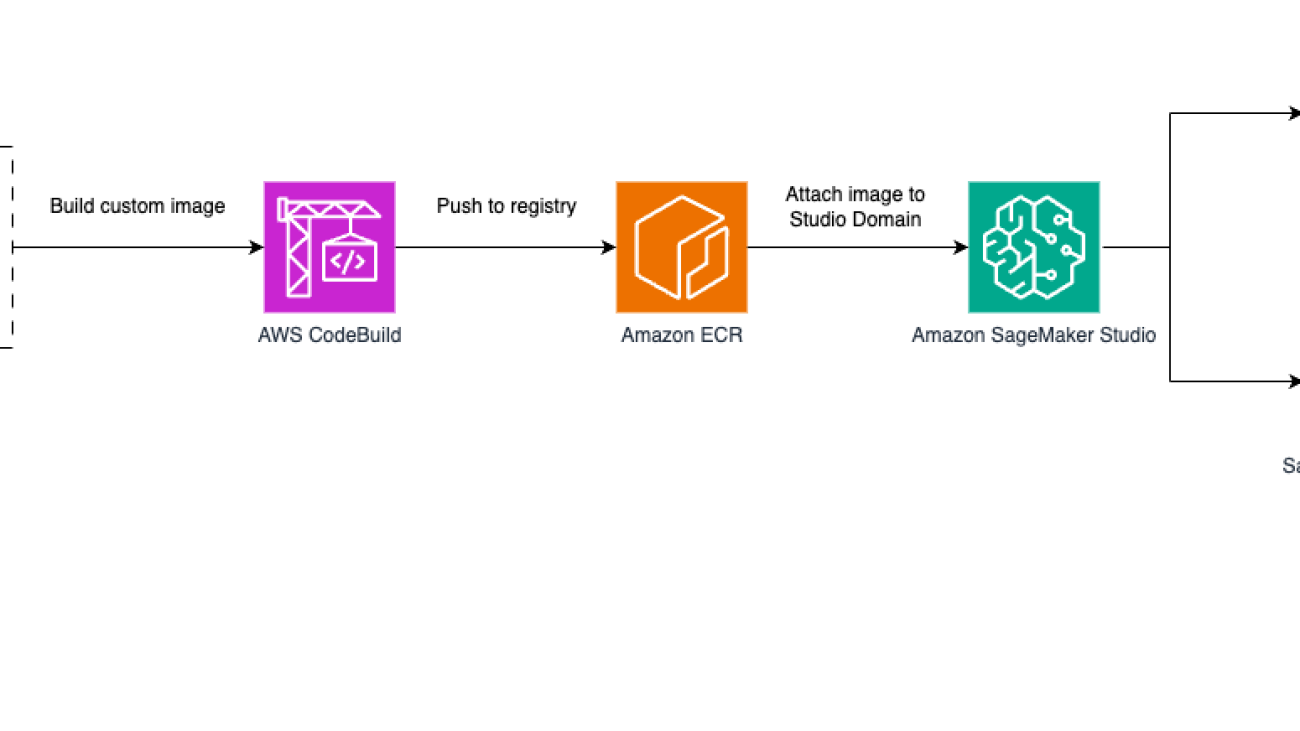




 Biswanath Mukherjee is a Senior Solutions Architect at Amazon Web Services. He works with large strategic customers of AWS by providing them technical guidance to migrate and modernize their applications on AWS Cloud. With his extensive experience in cloud architecture and migration, he partners with customers to develop innovative solutions that leverage the scalability, reliability, and agility of AWS to meet their business needs. His expertise spans diverse industries and use cases, enabling customers to unlock the full potential of the AWS cloud.
Biswanath Mukherjee is a Senior Solutions Architect at Amazon Web Services. He works with large strategic customers of AWS by providing them technical guidance to migrate and modernize their applications on AWS Cloud. With his extensive experience in cloud architecture and migration, he partners with customers to develop innovative solutions that leverage the scalability, reliability, and agility of AWS to meet their business needs. His expertise spans diverse industries and use cases, enabling customers to unlock the full potential of the AWS cloud.



 NVIDIA GeForce NOW (@NVIDIAGFN)
NVIDIA GeForce NOW (@NVIDIAGFN) 




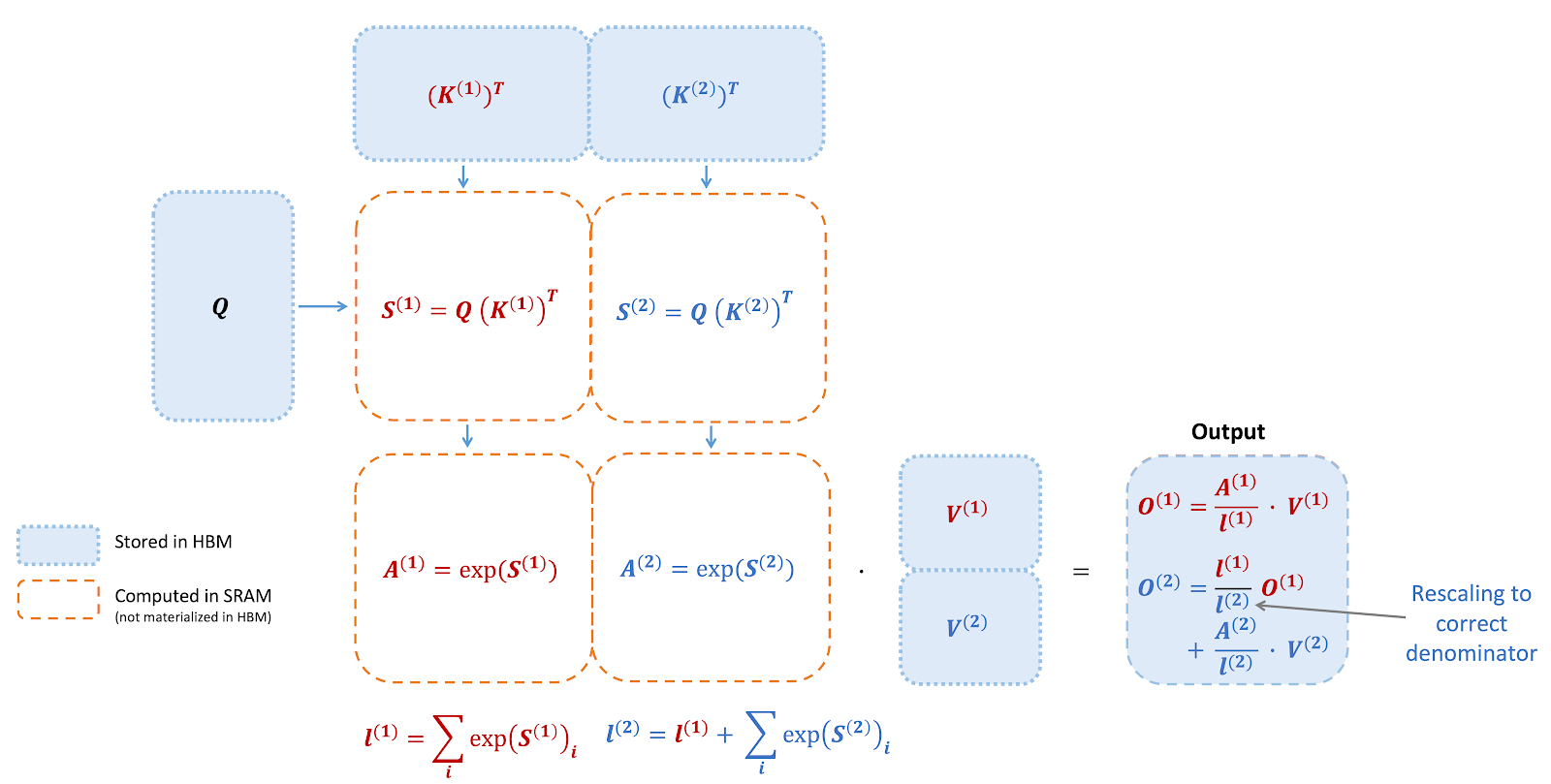
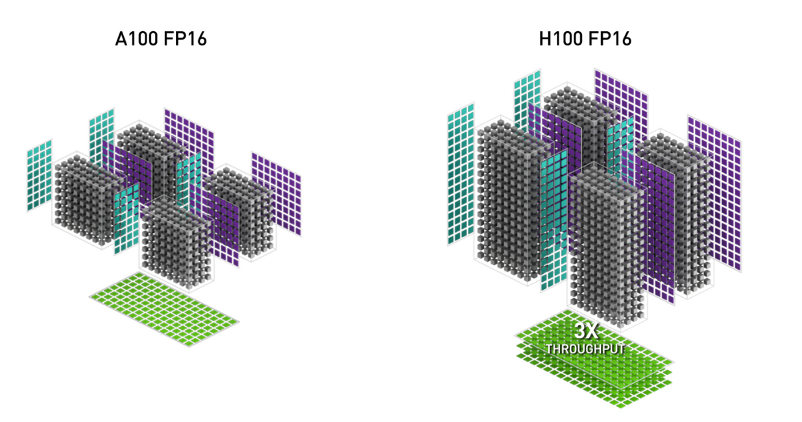
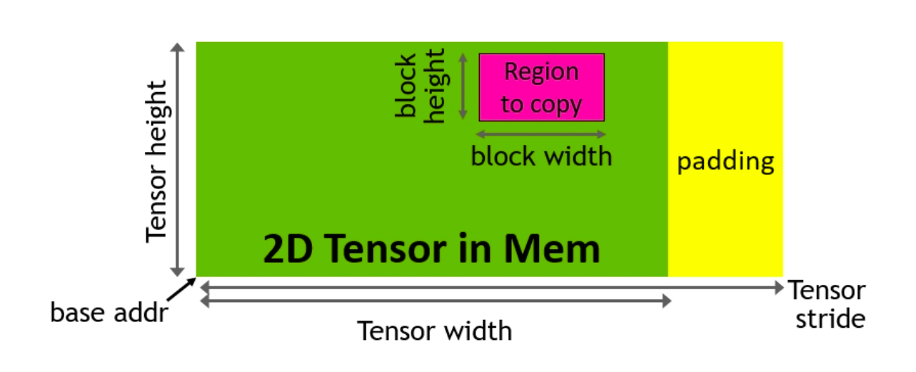
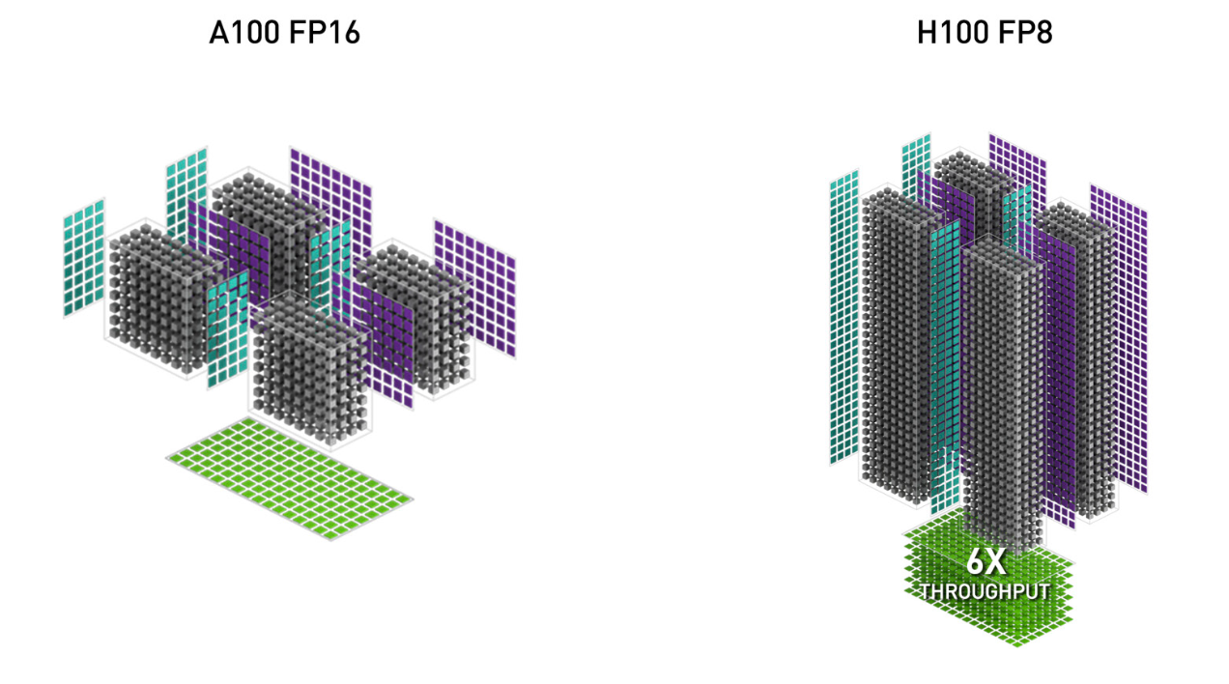



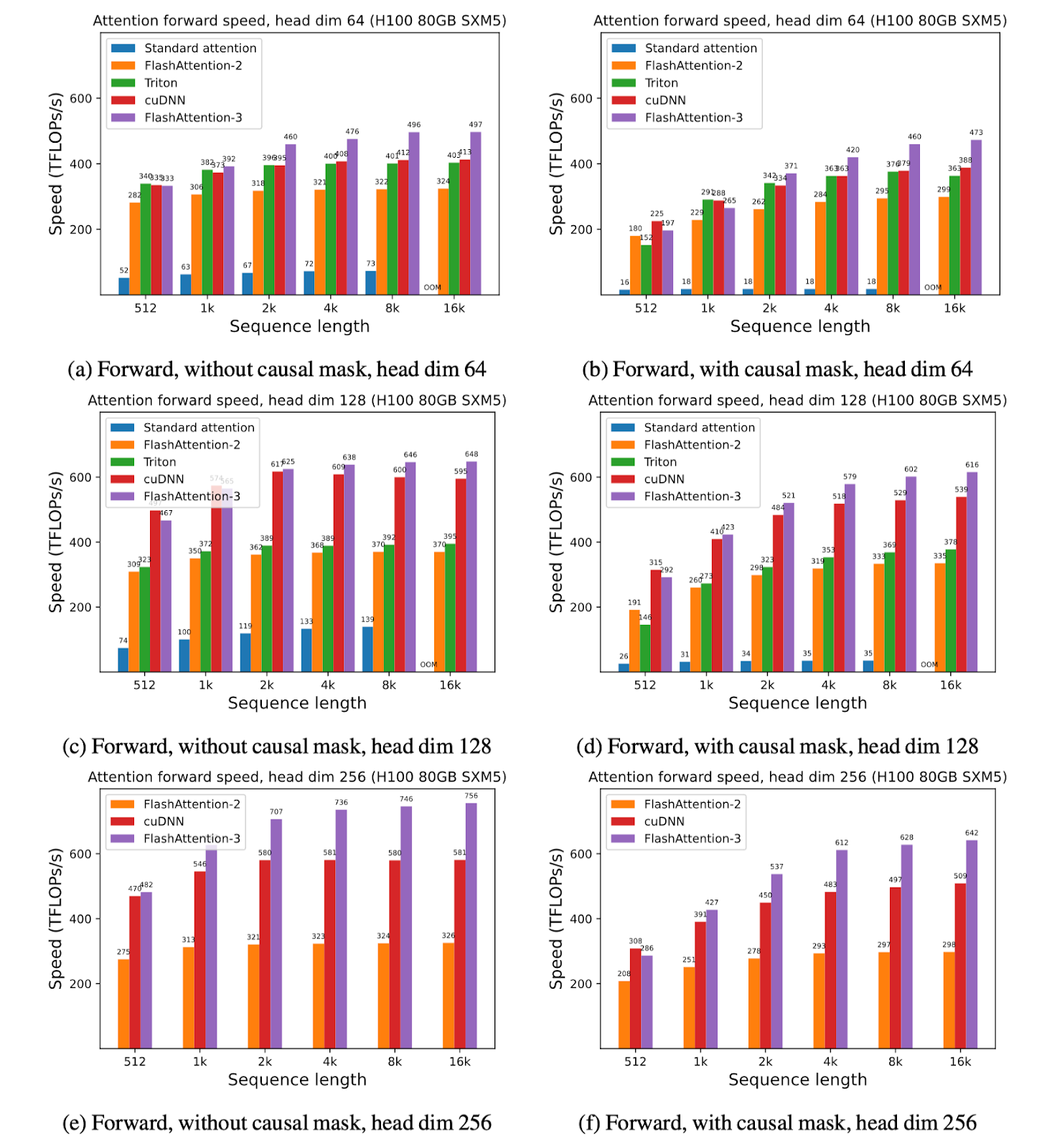
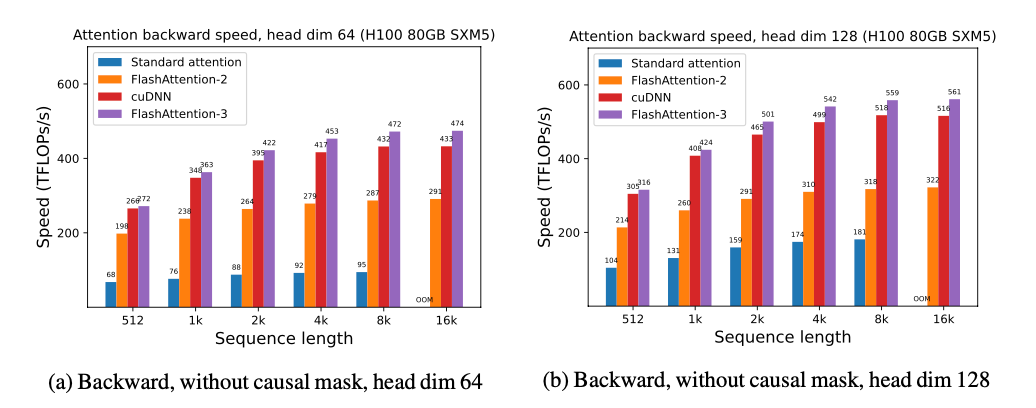
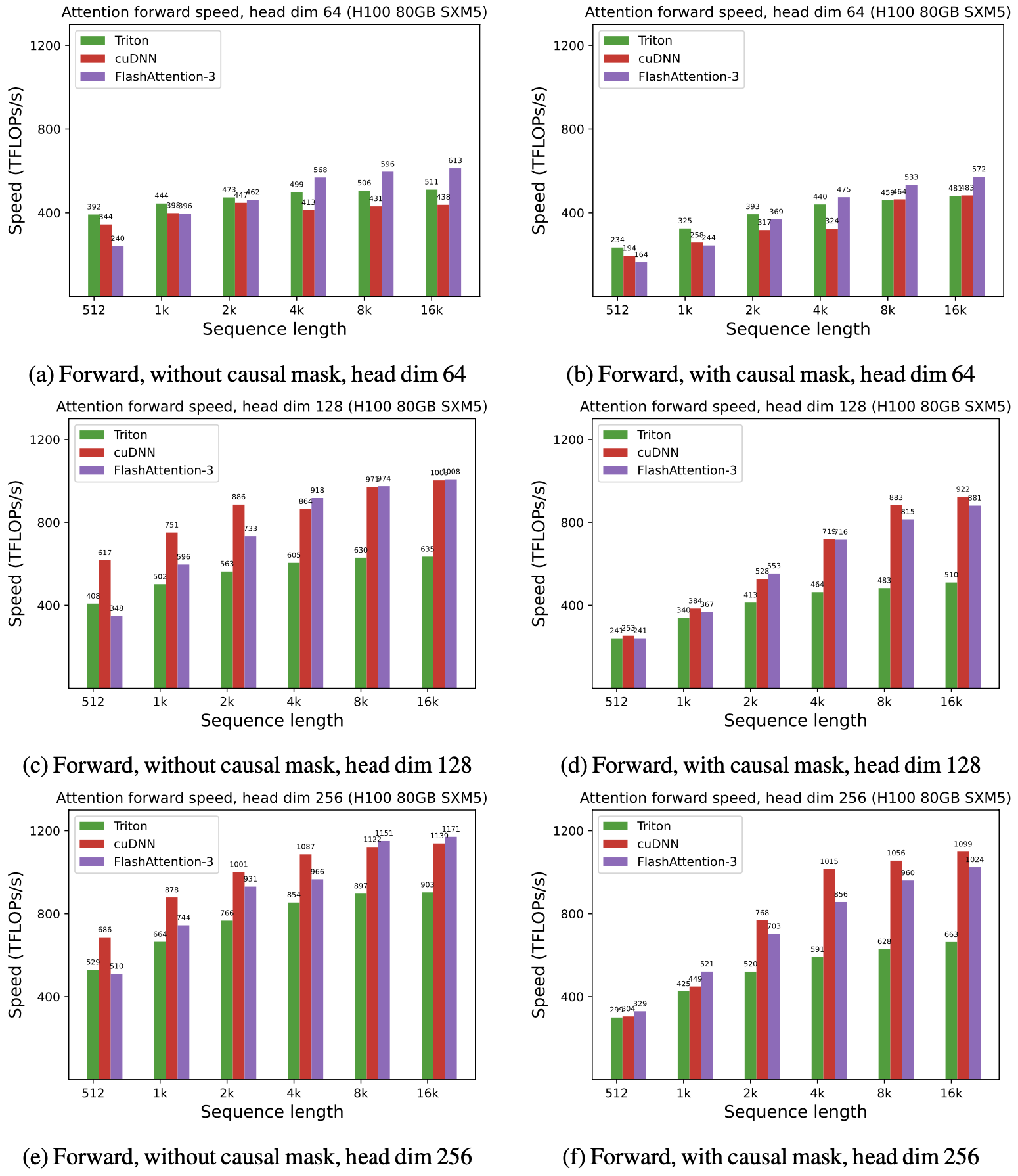
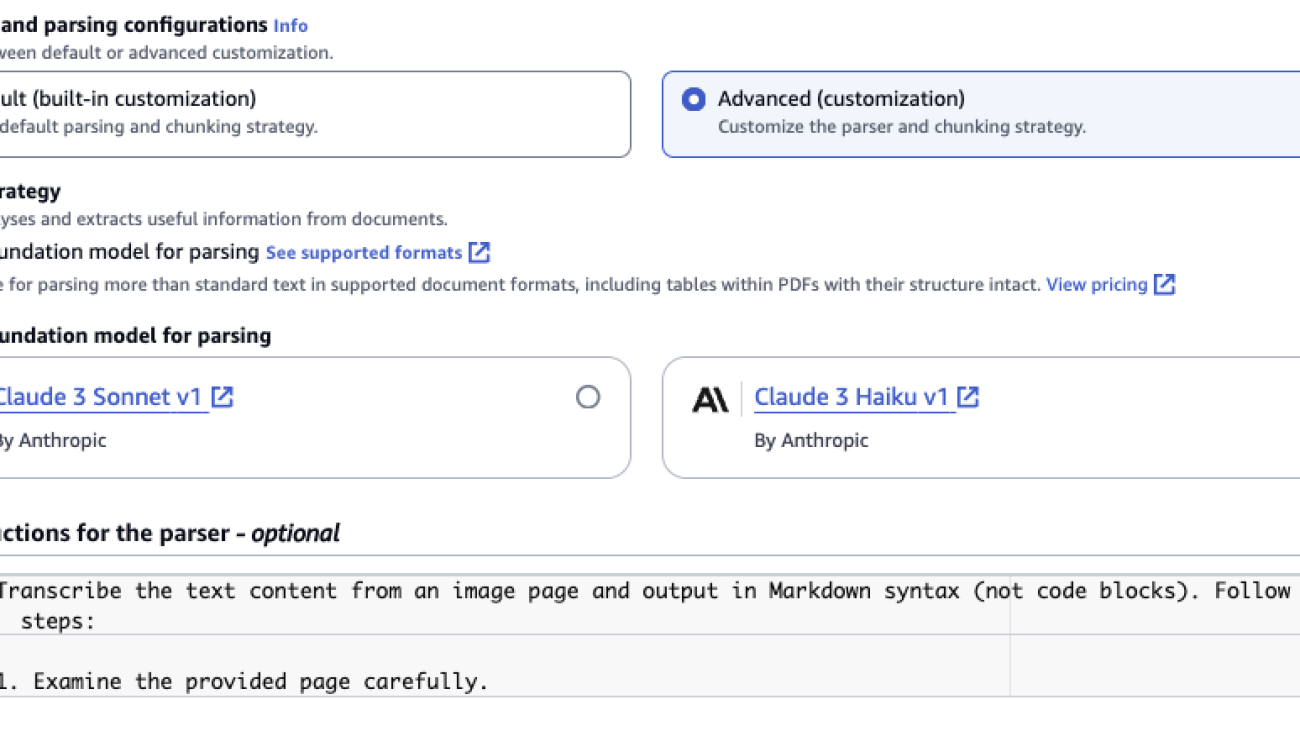





 Sandeep Singh is a Senior Generative AI Data Scientist at Amazon Web Services, helping businesses innovate with generative AI. He specializes in Generative AI, Artificial Intelligence, Machine Learning, and System Design. He is passionate about developing state-of-the-art AI/ML-powered solutions to solve complex business problems for diverse industries, optimizing efficiency and scalability.
Sandeep Singh is a Senior Generative AI Data Scientist at Amazon Web Services, helping businesses innovate with generative AI. He specializes in Generative AI, Artificial Intelligence, Machine Learning, and System Design. He is passionate about developing state-of-the-art AI/ML-powered solutions to solve complex business problems for diverse industries, optimizing efficiency and scalability. Mani Khanuja is a Tech Lead – Generative AI Specialists, author of the book Applied Machine Learning and High Performance Computing on AWS, and a member of the Board of Directors for Women in Manufacturing Education Foundation Board. She leads machine learning projects in various domains such as computer vision, natural language processing, and generative AI. She speaks at internal and external conferences such AWS re:Invent, Women in Manufacturing West, YouTube webinars, and GHC 23. In her free time, she likes to go for long runs along the beach.
Mani Khanuja is a Tech Lead – Generative AI Specialists, author of the book Applied Machine Learning and High Performance Computing on AWS, and a member of the Board of Directors for Women in Manufacturing Education Foundation Board. She leads machine learning projects in various domains such as computer vision, natural language processing, and generative AI. She speaks at internal and external conferences such AWS re:Invent, Women in Manufacturing West, YouTube webinars, and GHC 23. In her free time, she likes to go for long runs along the beach. Chris Pecora is a Generative AI Data Scientist at Amazon Web Services. He is passionate about building innovative products and solutions while also focused on customer-obsessed science. When not running experiments and keeping up with the latest developments in generative AI, he loves spending time with his kids.
Chris Pecora is a Generative AI Data Scientist at Amazon Web Services. He is passionate about building innovative products and solutions while also focused on customer-obsessed science. When not running experiments and keeping up with the latest developments in generative AI, he loves spending time with his kids.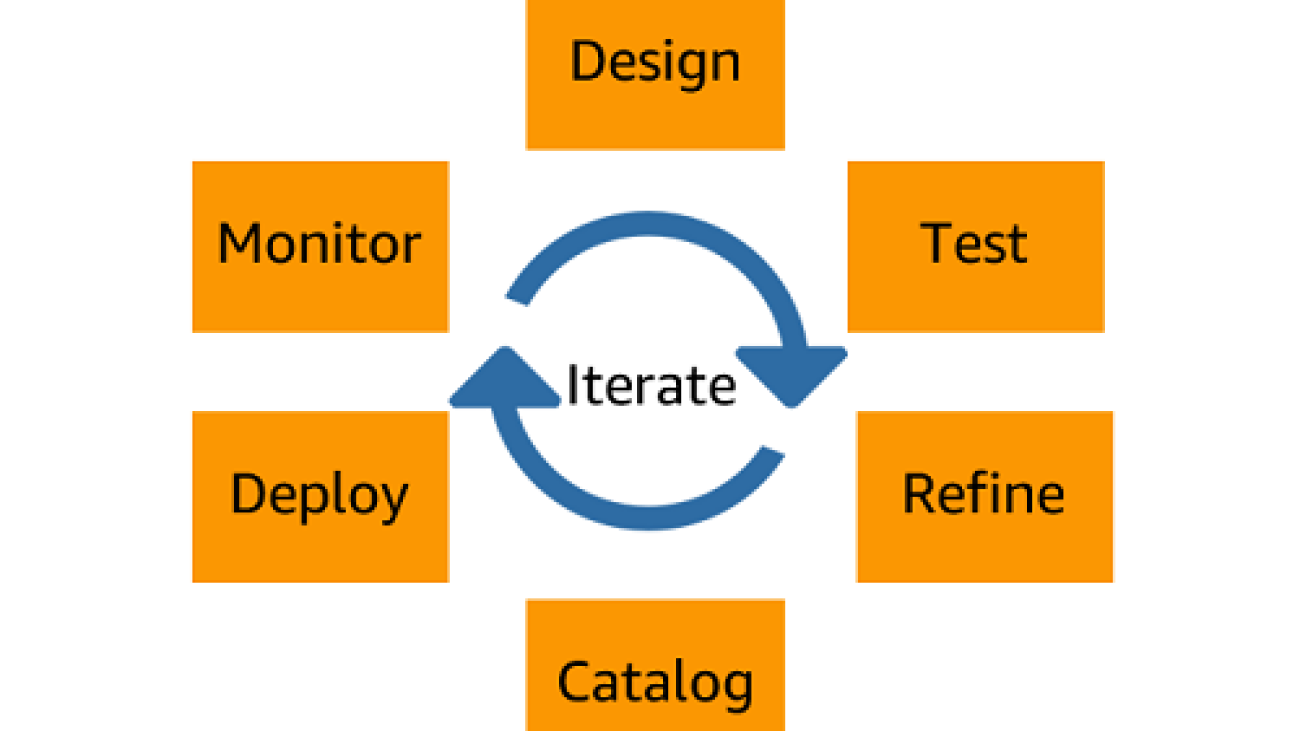














 Antonio Rodriguez is a Sr. Generative AI Specialist Solutions Architect at AWS. He helps companies of all sizes solve their challenges, embrace innovation, and create new business opportunities with Amazon Bedrock. Apart from work, he loves to spend time with his family and play sports with his friends.
Antonio Rodriguez is a Sr. Generative AI Specialist Solutions Architect at AWS. He helps companies of all sizes solve their challenges, embrace innovation, and create new business opportunities with Amazon Bedrock. Apart from work, he loves to spend time with his family and play sports with his friends. Jared Dean is a Principal AI/ML Solutions Architect at AWS. Jared works with customers across industries to develop machine learning applications that improve efficiency. He is interested in all things AI, technology, and BBQ.
Jared Dean is a Principal AI/ML Solutions Architect at AWS. Jared works with customers across industries to develop machine learning applications that improve efficiency. He is interested in all things AI, technology, and BBQ.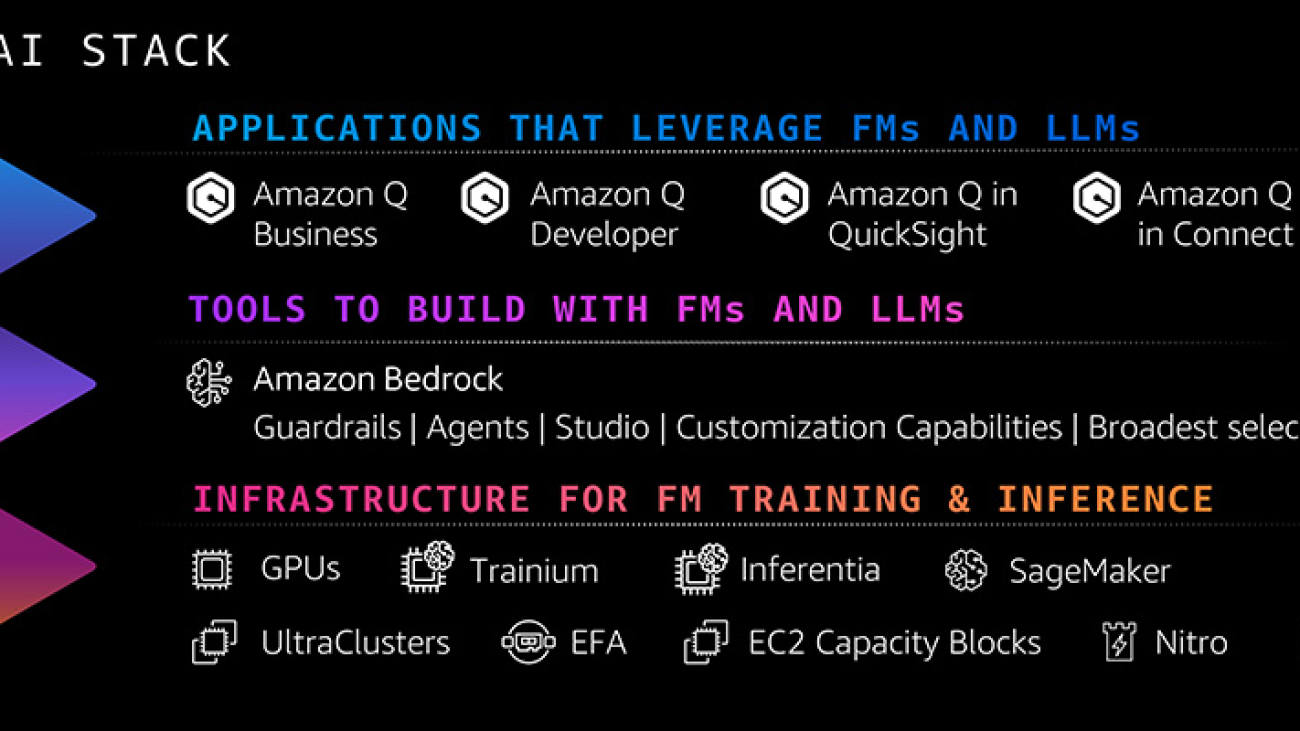




 solution, designed specifically for CFOs. It leverages Deloitte’s proprietary data and industry depth across the finance function. C-Suite AI provides customized AI models tailored to the needs of CFOs, with applications that span critical finance areas, generative analytics for data-driven insights, contract intelligence, and investor relations support.
solution, designed specifically for CFOs. It leverages Deloitte’s proprietary data and industry depth across the finance function. C-Suite AI provides customized AI models tailored to the needs of CFOs, with applications that span critical finance areas, generative analytics for data-driven insights, contract intelligence, and investor relations support.

 Vasi Philomin is VP of Generative AI at AWS. He leads generative AI efforts, including Amazon Bedrock and Amazon Titan.
Vasi Philomin is VP of Generative AI at AWS. He leads generative AI efforts, including Amazon Bedrock and Amazon Titan.